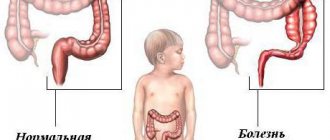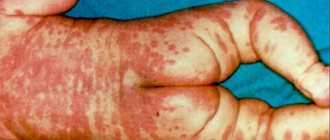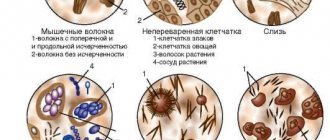Parotitis
is an acute viral disease, the characteristic feature of which is, first of all, inflammation and an increase in the size of the salivary glands.
First of all, the parotid salivary gland suffers, resulting in swelling of the cheek , and quite often the neck . A similar picture became the reason for the appearance of another, popular name for this disease - mumps
.
Since the virus has some affinity for glandular tissue and cells of the nervous system, it can infect other glands and cause acute pancreatitis (inflammation of the pancreas), orchitis (inflammation of the testicles), epididymitis (inflammation of the epididymis), and also lead to such diseases of the central nervous system such as meningitis and meningoencephalitis.
Causes of mumps (mumps)
Mumps most often affects children aged 3 to 15 years . Until one year of age, a child has innate immunity received from the mother’s body. In the absence of immunity acquired in childhood, an adult can also get mumps.
The infection is transmitted by airborne droplets
. Getting into the respiratory system along with tiny particles of mucus, the virus penetrates the blood and is transferred by the blood stream to the salivary glands. At the same time, the virus can penetrate other organs through the blood, which makes mumps a dangerous disease.
The virus is relatively stable in the external environment and can exist on toys, dishes, and household items; dies in the cold and during disinfection. However, since there are no catarrhal symptoms in mumps, the penetration of the virus into the external environment is negligible. The situation gets worse if, in parallel with mumps, the child gets a cold. In this case, the risk of spreading the infection increases.
The incubation period for mumps is from 11 to 23 days (usually 13-19 days). The patient is contagious from the last two days of the incubation period until 9 days after the onset of the first symptoms.
Mumps in children
The incubation period for mumps infection lasts from 12 to 26 days. In rare cases, it can last a minimum of 9 days, a maximum of 26 days.
Clinical manifestations depend on the form of the disease. The most common manifestation of mumps is damage to the parotid glands . The disease usually has an acute onset, accompanied by a rise in temperature to 38-39 °C. If cases of the disease are mild, then the temperature is normal or slightly elevated. The level of temperature in the following days depends on how widespread the infectious process is. The temperature curve has a wave-like character (it rises and then decreases). The temperature rises when the infection attacks other salivary glands or organs. Along with the temperature, symptoms of intoxication begin to appear. The child develops headaches and muscle pain, malaise, and loss of appetite. Young children become capricious. Parents observe sleep disturbances.
Among the first symptoms of mumps in children is pain in the area of the parotid salivary gland, which intensifies with chewing and talking. By the end of the first day or at the beginning of the second day (less often), an increase in the parotid salivary glands is observed. At first, the process concerns only one party. The second side is affected after 1-2 days. A swelling is visible in front of the ear, which descends along the ascending branch of the lower jaw and behind the auricle, lifting it up and out.
But the increase cannot always be determined visually; sometimes this requires palpation. Doctors note the softness or doughy structure of the salivary gland upon palpation. Pain occurs on palpation. According to N.F. Filatov, the following painful points are identified: in front of the earlobe, in the area of the apex of the mastoid process and in the place of the mandibular notch.
Within 2-4 days, the parotid glands enlarge. After this, the sizes gradually return to normal. Together with the parotid or after them, the submandibular (submaxillitis) and sublingual (sublingual) salivary glands are subject to the process.
In every 4th patient with mumps, inflammation of the submandibular gland (so-called submaxillitis) is observed. Most often it is accompanied by damage to the parotid salivary glands. It almost never appears at the onset of the disease.
Severe forms of the disease can cause tissue swelling to appear in the gland area and spread to the neck. sublingual inflammation occurs - an isolated lesion of the sublingual salivary gland. In this case, a swelling appears under the patient's tongue. The affected glands are usually enlarged for 5 to 7 days. Then the pain disappears and the swelling subsides. Inflammation ends on the 8-10th day of illness. But there are cases when the glands are inflamed for 2-3 weeks. The temperature periodically rises and falls again.
Damage to the genital organs due to mumps infection
The virus can attack the testicles, ovaries, prostate gland, and mammary glands. Teenagers are susceptible to orchitis (25 cases out of 100). Orchitis leads to persistent dysfunction of the testicles, which means to male infertility in the future. In those who have had orchitis, spermatogenesis is impaired (about 50% of those who have recovered from the disease), and in 1/3 of those who have recovered from the disease, signs of testicular atrophy are recorded. 1-2 weeks after the onset of inflammatory processes in the salivary glands, orchitis may begin to appear. But it happens that mumps infection has a primary localization in the testicles.
Inflammation of the testicles appears due to infection on the epithelium of the seminiferous tubules. Pain receptors are irritated, which leads to pain. The pressure inside the tubules increases, and this threatens to disrupt the microcirculation and functionality of the organ.
One of the initial symptoms of orchitis with mumps is an increase in temperature to 38-39 °C. Often a sick child feels chills. Symptoms of intoxication appear immediately - weakness, intense pain in the groin (attempts to walk cause more severe pain), headache. Localization of pain occurs mostly in the scrotum and testicles. The testicle enlarges and becomes denser. Palpation leads to increasing pain. Reddish vessels filled with blood are visible on the skin of the scrotum, and the skin may also acquire a bluish tint.
The process does not always extend to 2 testicles. The swelling lasts for 5 to 7 days, then begins to subside. After 1-2 months, signs of atrophy are revealed, the testicle decreases in size and becomes softer.
A rare form of mumps is thyroiditis . It usually manifests itself as an enlarged thyroid gland, fever, pain in the neck and tachycardia.
Damage to the lacrimal gland also occurs - dacryoadenitis, which manifests itself as pain in the eyes and swelling of the eyelids.
Damage to the nervous system
Very rarely, central nervous system damage is the only manifestation of mumps. Often the nervous system is affected by infection after the glands. If damage to the central nervous system is the only manifestation, then the salivary glands are almost untouched by the virus and do not hurt. Clinically, the disease manifests itself as meningoencephalitis, serous meningitis, and in rare cases, neuritis or polyradiculoneuritis.
Serous meningitis is most often recorded on the 7-10th day of illness after the symptoms of mumps infection begin to appear less or disappear.
Mumps meningitis has an acute onset and increased body temperature. The patient develops headaches and repeated vomiting. Young children are sleepy and lethargic. In rare cases, on the contrary, agitation, as well as convulsions and delirium, may be observed. From the first days of the disease, meningeal syndrome appears, which manifests itself as positive Kernig, Brudzinsky symptoms (appear as a result of irritation of the meninges, hemorrhage under the membranes). If the forms of the disease are mild, then the meningeal signs are weakly expressed (may be absent). The disease has the following manifestations: single vomiting, headache, slightly elevated temperature. The final diagnosis of mumps meningitis is made based on the results of a spinal puncture.
In some cases, meningitis with mumps can be combined with encephalitis (so-called meningoencephalitis). Cerebral symptoms in such cases occur simultaneously with meningeal symptoms or after two to three days. Clinical manifestations of meningitis include: repeated vomiting, severe headaches, delirium, impaired consciousness, and convulsions. Pathological reflexes and hyperkinesis are also likely. Usually the course of the disease is favorable. Clinical symptoms subside after 3-5 days. The symptoms of meningitis disappear after a week (maximum after 10 days). Cerebrospinal fluid normalizes slowly, changes in it can persist for up to 3-5 weeks.
The healing process may be delayed in some cases (rarely). In such cases, psychosensory disorders persist for a long time, which manifest themselves in decreased memory, increased fatigue, headaches and areflexia (absence of one or more reflexes).
Neuritis and polyradiculoneuritis are rare with mumps infection. When the parotid gland suddenly enlarges, it can lead to compression of the facial nerve, leading to paralysis. In this case, on the side of the affected facial nerve, the function of the facial muscles is impaired: the eyebrow is slightly lowered, the folds of the forehead are smoothed (as well as the nasolabial fold), the palpebral fissure does not close.
In case of mumps infection, lesions of the cochlear nerve with hearing loss have been described.
With mumps, mumps pancreatitis can develop , combined with damage to other organs. The frequency of pancreatitis, as far as can be judged from the specialized medical literature, ranges from 3% to 72%. The diagnosis of pancreatitis is established only by increasing the level of amylase in the blood.
With mumps, pancreatitis, as is correct, occurs 5-9 days after the onset of the disease. Pancreatitis is the only manifestation of the disease in very rare cases.
Mumps pancreatitis in typical cases has an acute onset, manifested by pain. Abdominal pain ranges from mild to very severe. The pain is felt in the epigastric region, left hypochondrium, sometimes it is encircling and radiates to the back, right hypochondrium. In addition to pain, nausea and vomiting also often occur, colds become more frequent, and body temperature rises. When palpating the abdomen, pain and bloating are noted.
A blood test at the height of the disease shows an increased amount of amylase, lipase, and trypsin. Diastase activity is increased in urine. Stool analysis shows a significant increase in the amount of unchanged muscle fibers, fatty acids and extracellular starch. Changes in peripheral blood are not typical.
The course of mumps pancreatitis is favorable. Symptoms begin to subside 10-12 days after the onset of symptoms. First, the pain disappears, then the patient’s well-being gradually improves. But pancreatic function is restored only in the third or fourth week from the onset of the disease.
Symptoms of mumps (mumps)
The disease usually begins acutely. The following symptoms appear:
- temperature (over 38°C);
- headache;
- general weakness, loss of appetite;
- pain while chewing or talking.
Towards the end of the first or second day of the disease, swelling occurs in the area of the parotid gland; the skin becomes stretched, touching this place is painful. Usually one gland swells first, and the next day or every other day the second one, on the other side, swells. The patient's face takes on a puffy appearance. The maximum increase in glands occurs on the third day, after which the swelling begins to subside and within a week the face
Complications of mumps
Severe forms of mumps are associated with damage to various organs by the virus. The pancreas, testicles in boys and ovaries in girls are most often affected. Mumps can lead to infertility. Another serious complication, which unfortunately occurs quite often, is meningitis.
Consequences of mumps
With timely consultation with a doctor and timely treatment, the prognosis of the disease is favorable in most cases. However, mumps can cause a number of complications both during the height of the disease and at a later date.
The main complications caused by mumps infection are as follows:
- Testicular atrophy after bilateral mumps orchitis, which leads to infertility and eunuchoidism.
- Myocarditis (in most cases manifested by heart rhythm disturbances).
- Arthritis, arthralgia (mainly large joints are affected).
- Optic nerve damage.
- Hearing loss. It can be temporary, but permanent hearing loss is also possible, and with a bilateral process, complete deafness.
- Paresis.
- Neuritis of the facial nerve.
- Hydrocephalus due to impaired cerebrospinal fluid dynamics.
- Diabetes mellitus (after mumps pancreatitis).
- Nephritis.
This disease is extremely dangerous due to its complications, it can lead to disability and a significant deterioration in the child’s quality of life, therefore, at the first suspicion of this disease, you should consult a doctor.
Treatment methods for mumps (mumps)
In case of complicated forms of mumps, hospitalization is required. In less severe cases, treatment is carried out at home. If you notice symptoms of mumps in your child, call a pediatrician at home.
Treatment for mumps (mumps) includes:
- bed rest (for the first 10 days of illness, the patient should, if possible, stay in bed, avoid physical and emotional stress and hypothermia),
- a diet that includes foods that are well digestible and do not require large amounts of pancreatic enzymes (reduces the risk of developing pancreatitis),
- drug treatment.
After the symptoms of mumps go away, the child must be examined to make sure that the disease has not caused complications.
Symptomatic treatment
For mumps, symptomatic treatment is carried out. Anti-inflammatory, antipyretic, and desensitizing drugs are used. Analgesics and pancreatic enzyme preparations are also prescribed.
Vaccination
In order not to expose children to the risk of disease, preventive vaccinations against mumps are given in Russia. In accordance with the National and Regional calendars of preventive vaccinations, vaccination against mumps (mumps) is carried out at the age of 12 months. Revaccination is carried out at the age of 6 years.
By contacting the Family Doctor about vaccination against mumps, you guarantee that the vaccine will be of high quality, and the actions of the medical staff will be professional and qualified.
You should contact your pediatrician for a referral for vaccination.
More information about the treatment method
Make an appointment Do not self-medicate. Contact our specialists who will correctly diagnose and prescribe treatment.
Rate how useful the material was
thank you for rating







